Rome's Piazza del Popolo: a practical guide to this enclave
Going to Piazza del Popolo means traveling back in time and seeing monuments and buildings that were built many centuries ago. Besides, it is a place with a beautiful natural environment, so it is a great choice to visit on your vacation in Rome.
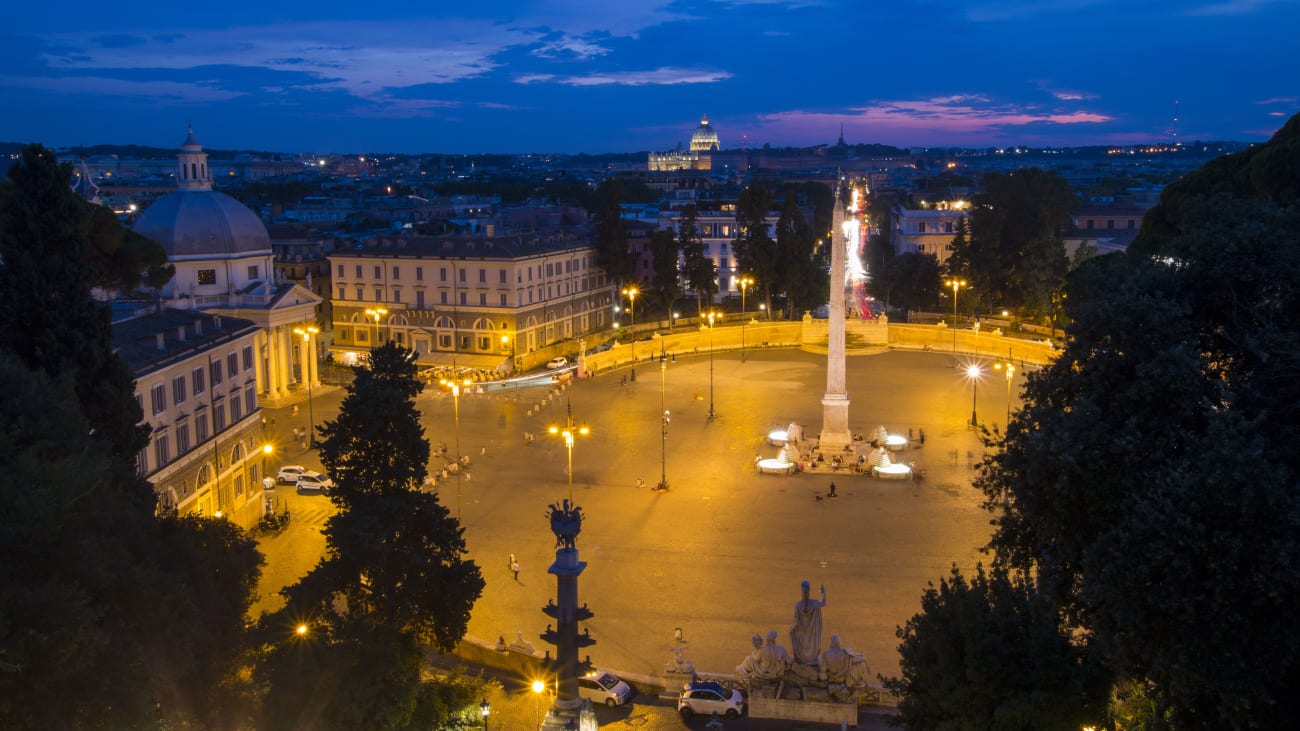
View of the blue hour from a Terrazza | ©Hans Permana
Among the most famous squares in Rome is Piazza del Popolo, what makes this place so special? From the moment you arrive at the entrance of the square you see some of the monuments, churches and places you can visit. Like many areas of Italy, it is full of history and interesting facts.
In addition to the most visited buildings, such as the twin churches and the Basilica Santa Maria del Popolo, there are others that are sure to please you. The square I'm talking about today offers beautiful gardens, museums and much more. Read and discover everything you have the opportunity to do and see in the famous square.
Get to know a Basilica with an interesting history behind it
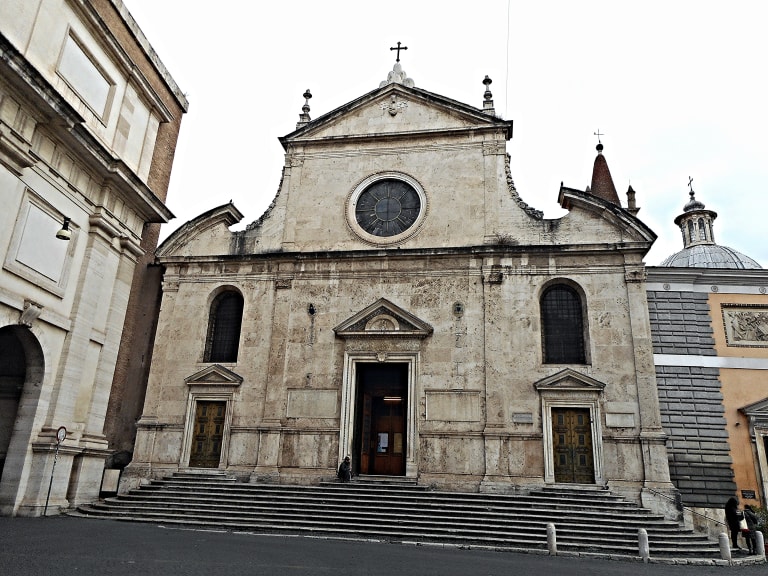
Rome is home to many religious sites, so if you want to visit one of the best churches in Rome, you might have a hard time choosing. My recommendation is the Basilica of Santa Maria del Popolo. It is located near one of the ancient gates of the city and is one of the most visited places.
I find it interesting that, although it is a minor basilica, it is so well known by the citizens and tourists of Rome. The reason is that it can be said to be different from the rest, it is said that on the ground where it stands was the tomb of Nero. For a long time, the ancient inhabitants of the city were afraid of it.
Some data of this religious center
- Among the main artists who decorated its interior are: Bernini, Caravaggio, Pinturicchio and Raphael.
- The ceilings are not as high as usual in basilicas and are not very decorated.
- The wooden benches have the names of the persons to whom they were dedicated.
- The decorations of its chapels are literally works of art.
- It can be said that this basilica is a small museum that has the following works: Crucifixion of St. Peter, funeral monuments of cardinals, image of Maria del Popolo, Conversion of St. Paul and more.
Information about the Basilica of Santa Maria del Popolo
-
Location: adjacent to the Porta Flaminia.
-
Hours: 7:30 am to 12:30 pm and 4 pm to 7 pm. It is not possible to visit during mass.
-
Entrance fee: free of charge.
Find the differences between the twin churches

The twin churches are Santa Maria dei Miracoli and Santa Maria in Montesanto, they were built simultaneously by the same people. When you visit the Piazza del Popolo you have the opportunity to enter them and see their baroque design common in Rome in the years they were made.
One of the things that catches the attention of visitors is that these churches appear to be identical. However, as you see them (both inside and out) you will find their differences. For example, the dome of the church on the left is oval in shape and that of Santa Maria dei Miracoli is circular.
Unlike Santa Maria del Popolo, there is not much artwork in the twin churches. However, as is common in Italy, the interior of both is very attractive with details made in the 18th century that are still intact today.
Additional facts about the twin churches
- Location: Via del Corso.
- Hours: 7:00 a.m. to 12:30 p.m. and 4:00 p.m. to 7:30 p.m. (may change due to religious events).
- Price: free access.
Visit an Egyptian monument in Rome

The monument is known as the "Obelisk of Piazza del Popolo" or "Obelisco Flaminio". It is located in the square and anyone can see it from different points, it is also valid to approach it. Up close you can see the four circular pools and the statues of lions that were placed to adapt the environment to the Egyptian style.
The 23.30 meters high obelisk was built in the 13th century BC and was located in Heliopolis, a city of ancient Egypt. In the 10th century B.C. C Augustus ordered to take it to Rome, and place it in the Circus Maximus. Eventually it disappeared and remained so for a long time.
It was rediscovered in 1587 and the excavation was directed by Pope Sixtus V, when it was moved it was placed in Piazza del Popolo. It is made of red granite and its shape represents the ray of the divine sun, Ra. Undoubtedly one of the best monuments in Rome.
Additional facts about the Obelisk
- Location: in front of the Basilica Santa Maria del Popolo.
- Hours: it is a public place, so there is access to it at all hours.
- Price: because it is located in Piazza del Popolo, access is free.
Admire Piazza del Popolo and Rome from above

A place that is often visited by both citizens of Rome and tourists is the Pincio hill. Although it is not one of the main hills of the city, it is one of the most famous, as it offers a wonderful panoramic view of the area. On Pincio are the following places:
- The panoramic terrace: in this area you get an excellent view of Piazza del Popolo, the dome of St. Peter's Basilica and more.
- Gardens: the person in charge of creating the landscaped places on the hill was Giuseppe Valadier, in them there are statues, busts and a famous hourglass.
If you want to know from which other places you can get the best views of Rome, enter the article where I give you the answer.
Additional facts about Pincio Hill
- Location: it is connected to Piazza del Popolo by a staircase, to reach it you must go to Via del Corso.
- Hours: open 24 hours.
- Price: free access.
Do not overlook the gate of the wall

Although the Porta del Popolo is the main way into the city, it is easy for some visitors to pass through it without detailing it. I recommend that you take a moment to observe it. On either side of the door are statues of St. Paul and St. John.
The most remarkable thing about the door is that it was made by Nanni di Baccio, Michelangelo's apprentice architect, in the 16th century. A century later, the Porta del Popolo was decorated because Christina of Sweden was visiting Rome. On the outside of the door there are elements such as ornaments, columns, statues or inscriptions.
Additional information about the Porta del Popolo
- Location: in Piazza del Popolo.
- Hours: it is a public place, so it is accessible 24 hours a day.
- Price: free of charge.
Get to know the creations of one of the greatest geniuses of all times

Very close to Piazza del Popolo is the Leonardo da Vinci Museum, ideal for visitors of all ages. It features creations by the anatomist, artist, architect, scientist, engineer and inventor. Use the interactive machines that have been made by various Italian artisans based on da Vinci's manuscripts.
In addition to the machines, the Museum features Renaissance works, an interactive room, the famous sketches of the anatomy of humans and videos. Every object you see at the Leonardo da Vinci Museum will help transport you into the mind and life of this famous Italian who dedicated himself to different fields.
The Museum is part of the best things to do in Rome with kids. So, if you are traveling with your kids, they will surely have fun with the interactive objects.
Additional facts about the Leonardo da Vinci Museum
- Location: basement of the Basilica of Santa Maria del Popolo.
- Hours: from 10 am to 7 pm.
- Price: the entrance fee is about €10. If you want the audio-guide, you need to pay about 3€. More information on the website of the Leonardo da Vinci Museum.
Visit the property that belonged to the Borghese family
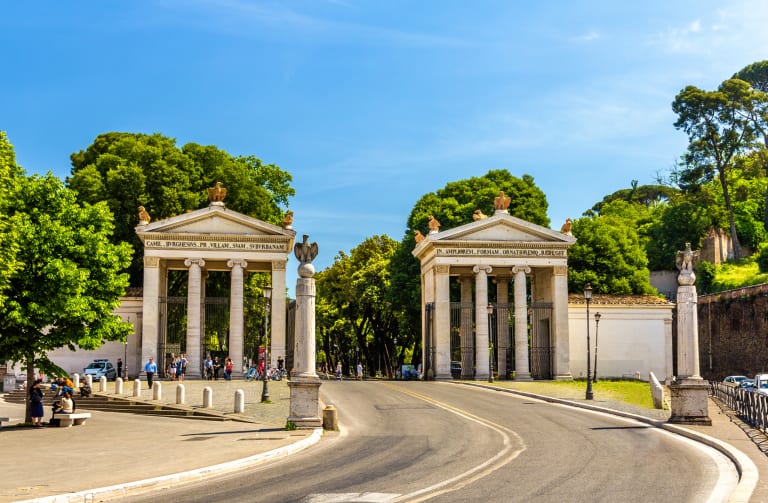
Opposite Piazza del Popolo is the entrance to the Villa Borghese gardens. One of the most famous museums in Rome (and Italy) is the Galleria Borghese, it houses all the works of art that belonged to the Borghese. The place is full of wonderful elements, most notably works by Caravaggio, Bernini, Raphael or Titian.
The Borghese family had in their possession for many years these paintings and sculptures, it was Cardinal Scipione Borghese who began to collect them. When they were affected by the devaluation of the currency and the agricultural crisis, the Borghese sold their property and works of art to the State.
Additional facts about the Galleria Borghese
- Location: Piazzale Scipione Borghese, about 2.6 kilometers from Piazza del Popolo.
- Hours: from 9 am to 10 pm.
- Price: from €15. More information on the website of the Galleria Borghese.
A museum made especially for an ancient altar
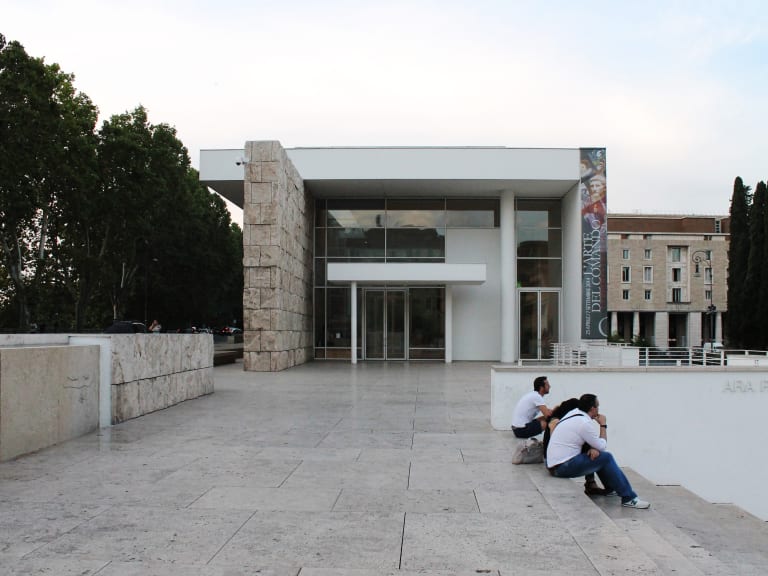
The Museo Dell'Ara Pacis is an establishment that houses one of the most significant Roman monuments: the Ara Pacis Augustae. There is also a space dedicated to temporary exhibitions, archaeological themes and a digital library.
The Ara Pacis Augustae or Altar of the Peace of Augustus was realized in 9 BC and celebrated the pacification achieved in the reign of Augustus. Priests, magistrates of Rome and vestal virgins offered sacrifices on it. Over time, the Tiber left the great monument submerged for more than 1000 years.
In the 19th century most of its pieces were found and in the 1930s its reconstruction began.
Additional information about the Museo Dell'Ara Pacis
- Location: Lungotevere in Augusta (less than 2 kilometers from Piazza del Popolo).
- Hours: from 9:30 am to 7:30 pm.
- Price: about 10€. More information on the website of the Museo Dell'Ara Pacis.
Visit the tomb of one of the most remembered emperors of Rome
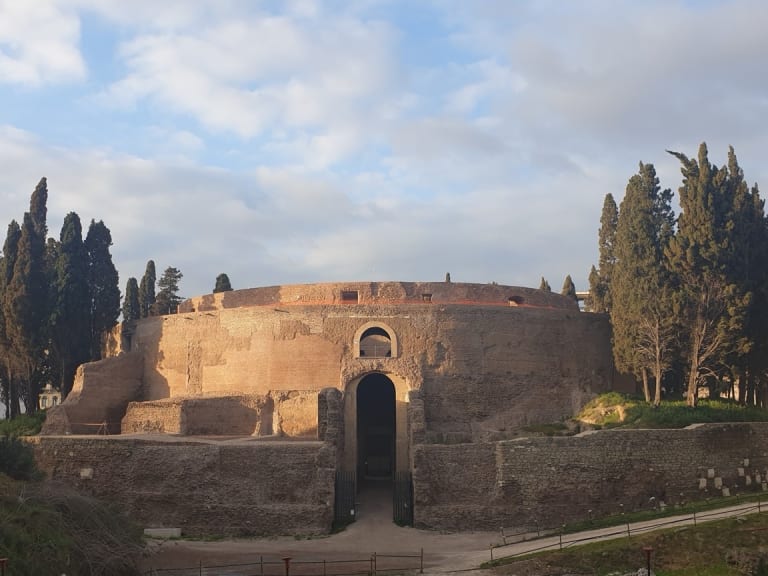
Although a few years ago it was only possible to visit the ruins of the Mausoleum of Augustus, it was recently remodeled and opened its doors to welcome visitors. The circular tomb has a diameter of 90 meters and a height of less than 45 meters and is the place that Augustus built to be his tomb and that of his family.
He achieved many things as emperor and benefited the city a lot, so they built an altar in his honor. When he was still young, he began to build the place where his remains would be placed. Over time, it deteriorated and was forgotten, although the altar was rebuilt, the tomb was in ruins.
The Mausoleum of Augustus began to be rebuilt, structurally reinforced and prepared to receive people. It began to receive citizens and tourists in 2021, visits last approximately 50 minutes.
Additional facts about the Mausoleum of Augustus
- Location: next to the Museum Dell'Ara Pacis.
- Hours: from 9 am to 7 pm.
- Price: from €4. More information on the website of Il Mausoleo di Augusto
Visit the commemorative plaque commemorating two men executed near Piazza del Popolo

A plaque was installed in Piazza del Popolo in 1909, commemorating the death of Angelo Targhini and Leonida Montanari. On it are the images of the men. The so-called "Lapide Angelo Targhini e Leonida Montanari" is one of the details of the Piazza that not all tourists know.
Targhini and Montanari were two Carabinieri, a society whose followers wanted constitutional government and political freedom. Both were executed in 1825 by order of Pope Leo XII. Years after their deaths, many began to consider them heroes of the Risorgimento.
Additional information about the Targhini and Montanari commemorative plaque
- Location: on the left side of the Porta del Popolo.
- Hours: you can see it 24 hours a day.
- Price: public access.
Where exactly is Piazza del Popolo located?

Piazza del Popolo is located *at the foot of the Pincio, where the ancient Porta Flaminia was. This is one of the most famous squares in Rome and is in the northern part of the Italian capital.
The Porta Flaminia, today Porta del Popolo, was a wall that was intended to keep the city safe from barbarian invasions. The tomb of the Roman emperor Nero used to be located in the square, so since ancient Rome it has been a well-known landmark.
How to get to Piazza del Popolo from Rome?
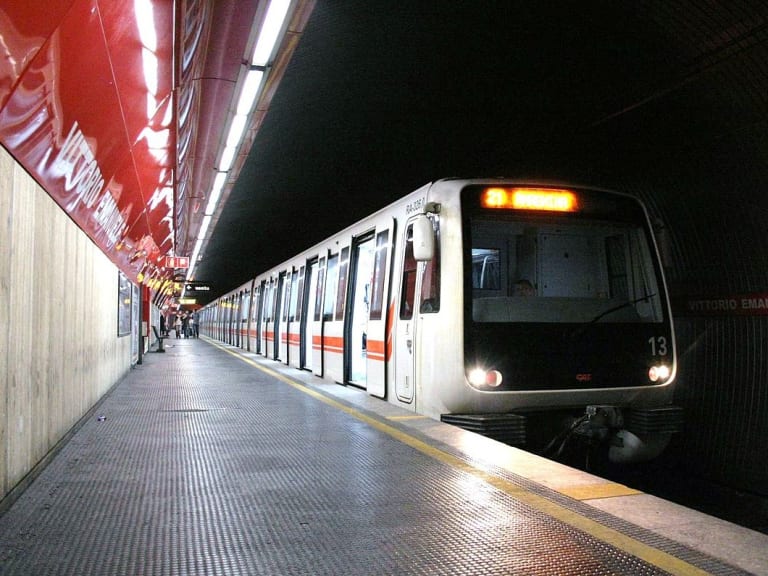
Rome is not very far from Piazza del Popolo, the distance between the two points is just over 3.5 kilometers. You can get there by cab from the center of Rome for about 10 euros or by Rome Metro from Termini to Flaminio.
Once you get to Piazza del Popolo you can walk to any of the places I have told you about. My recommendation is that you dedicate half a day or a day to visit the Piazza and several of its areas of interest. If this is not possible, select what you liked the most and what suits your travel conditions, and visit it.
Regardless of what you choose, I wish you a happy trip. Finally, I leave you a guide in which I talk about the keys to organize your trip to Rome.
